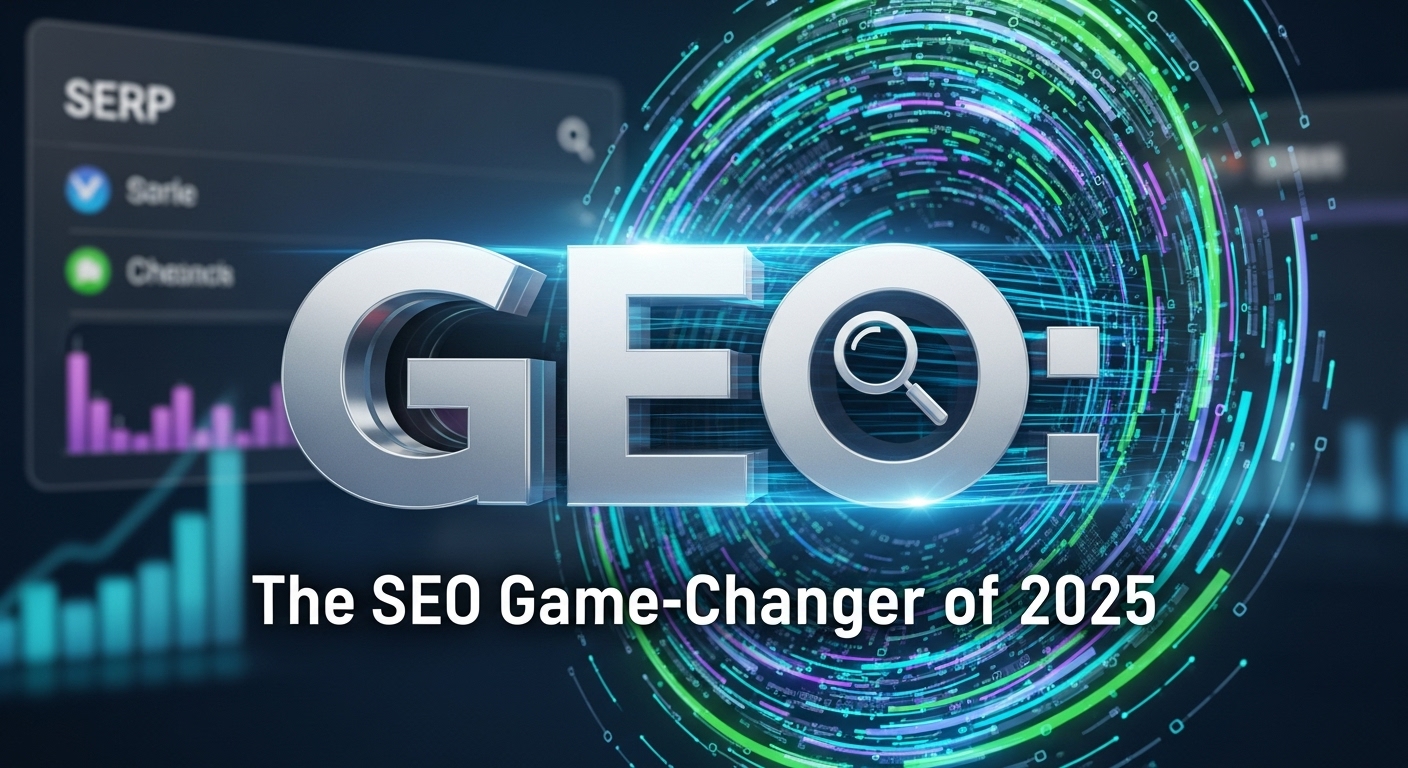The world of search is changing fast—and so should your digital strategy. If you’ve been relying solely on traditional SEO to boost your visibility online, it’s time to look ahead. Welcome to the era of Generative Engine Optimization (GEO)—a revolutionary shift in how brands get discovered in the age of AI.
At Big Bulls Marketing, we’re here to break down what GEO is, why it matters in 2025, and how you can start adapting today. Trust us—this isn’t just a buzzword. It’s the next big wave in digital marketing.
What Is Generative Engine Optimization (GEO)?
Generative Engine Optimization (GEO) is the process of optimizing your content not just for search engines like Google—but for AI-powered engines like ChatGPT, Google Gemini, Claude, and others.
While traditional SEO helps you rank in search results, GEO ensures your content is included directly within AI-generated answers. That’s right—your content becomes the source that AI tools quote or summarize when users ask questions.
Instead of fighting for clicks, you’re now competing for mentions inside the answer itself.
Why GEO Is the Future of SEO in 2025
Search behavior has changed drastically. Let’s face it—people are no longer just typing keywords into Google. They’re asking full questions in conversational AI tools. And instead of clicking links, they get instant answers.
Here’s why GEO is a game-changer:
- Zero-click searches are rising
AI platforms provide complete answers, so users don’t even need to click through to a website. If your brand isn’t in that answer, you’re invisible. - AI is the new search engine
Tools like ChatGPT and Gemini are becoming the first-place people turn for advice, research, and recommendations. - First movers get ahead
Most businesses haven’t optimized for GEO yet. That’s your opportunity to stand out—before your competitors catch on.
GEO vs Traditional SEO: What’s the Difference?
Let’s break it down.
| Traditional SEO | Generative Engine Optimization (GEO) |
| Optimizes for Google’s algorithm | Optimizes for AI language models |
| Focus on keywords & backlinks | Focus on clarity, structure, & citations |
| Aims for search rankings | Aims for AI-generated inclusion |
| Click-through traffic | Answer-based visibility |
In other words, SEO gets you seen. GEO gets you featured.
How to Optimize for GEO in 2025
Now that you know what GEO is, let’s talk action. Here’s how you can make your content AI-friendly.
1. Structure Your Content Clearly
AI engines love organized information. Use:
- Clear headings (H2, H3)
- Bullet points
- FAQs
- Step-by-step guides
This helps AI parse your content and quote it accurately.
2. Use Schema Markup
Adding schema (structured data) helps AI understand exactly what your content is about. For example:
- Product schema
- FAQ schema
- Review schema
These enhance your chances of being cited in AI answers.
3. Add an llms.txt File
Just like robots.txt tells search engines what to crawl, llms.txt tells AI engines how to access and cite your content.
4. Write in a Conversational Tone
AI prioritizes natural, human-like content. So skip the jargon. Use plain language, short sentences, and a helpful tone.
5. Cover Topics in Depth
AI engines prefer authoritative content. That means:
- Answering common and related questions
- Offering expert insights
- Avoiding fluff
The more complete your content is, the more likely it’ll be referenced.
Real-World Example: GEO in Action
Imagine a user asking ChatGPT:
“What are the best digital marketing trends for 2025?”
Instead of listing search results, the AI responds:
“Generative Engine Optimization (GEO), according to Big Bulls Marketing, is a leading trend for 2025 that focuses on visibility within AI-generated answers.”
That’s GEO at work.
Your brand is mentioned in the answer—no click required.
Why Your Business Can’t Ignore GEO
GEO is not just for big tech companies or AI geeks. Whether you’re a small business, e-commerce brand, or digital agency, you can benefit from this shift.
By adopting GEO:
- Your content becomes part of the conversation
- Your brand appears where users are actually looking
- You gain trust and visibility—without relying on rankings
At Big Bulls Marketing, we help businesses implement both SEO and GEO strategies that future-proof their online presence.
GEO + SEO = The Perfect Duo
Here’s the good news: You don’t have to choose between GEO and SEO.
The best strategy for 2025 is to combine them.
Use SEO to rank on Google. Use GEO to be cited by AI.
Together, they give you unstoppable visibility across both traditional and AI-driven search platforms.
Final Thoughts
The way people find information is evolving. AI isn’t a trend—it’s the new search engine. If your content isn’t optimized for AI-generated answers, you’re missing out on massive visibility.
GEO is your chance to get ahead.
Start now. Be the source, not just a search result.
Big Bulls Marketing is here to help you lead the way in this next era of search. Let’s make your content impossible to ignore—in search engines and in AI answers.
Frequently Asked Questions (FAQs)
Q1. What is Generative Engine Optimization (GEO)?
GEO is the practice of optimizing your content so it can be cited in AI-generated answers from platforms like ChatGPT, Gemini, and Claude.
Q2. How is GEO different from traditional SEO?
Traditional SEO helps you rank in Google search results. GEO helps your content appear directly in AI-powered answers, often without a click.
Q3. Why is GEO important in 2025?
As users shift from search engines to conversational AI tools, GEO ensures your brand remains visible—even in zero-click environments.
Q4. Do I need to stop doing SEO if I focus on GEO?
Not at all. GEO complements SEO. A winning strategy in 2025 includes both—ranking in search and being cited in AI answers.
Q5. How can I start optimizing for GEO?
Start by structuring your content clearly, using schema markup, writing conversationally, and including an llms.txt file for AI engines.
If you need help getting started with GEO, contact Big Bulls Marketing today.
We’ll help you adapt, optimize, and lead in the age of AI.



Leave a Reply